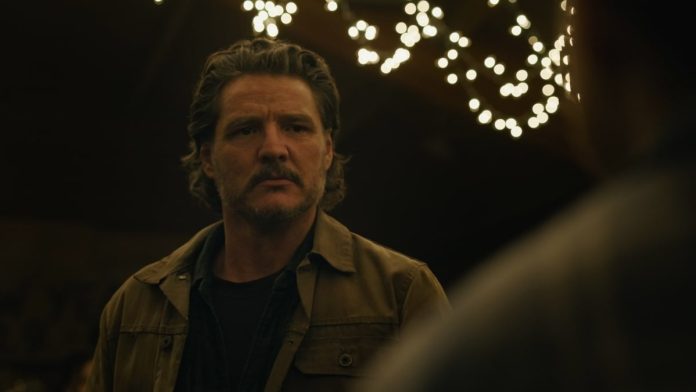The Last of Us Season 2 is just as moving as its predecessor, but it’s also infinitely more frustrating.
Just like in Season 1, series co-creators Craig Mazin (Chernobyl) and Neil Druckmann (creator of The Last of Us game) have crafted a stirring post-apocalyptic tale about the relationship between survivors Joel (Pedro Pascal) and Ellie (Bella Ramsey), one that’s just as likely to fill your heart as it is to stomp it into tiny pieces. But as the season seeks to widen the world of The Last of Us beyond its central pair and the settlement of Jackson, Wyoming, it often comes up short of the in-depth world-building that made Season 1 feel so lived-in and complete.
‘The Last of Us’ Season 2 teaser is here to bring you to tears
The Last of Us Season 2 is a haunting continuation of Joel and Ellie’s story.
Bella Ramsey in “The Last of Us.”
Credit: Liane Hentscher / HBO
The Last of Us Season 2 picks up five years after the Season 1 finale, when Joel wiped out the Fireflies in Salt Lake City in order to save Ellie’s life. Now, the two live in the thriving community of Jackson, alongside Joel’s brother Tommy (Gabriel Luna) and his wife Maria (Rutina Wesley). However, their relationship has frayed to the point that they’re barely on speaking terms. Joel reckons with the loss by speaking with town therapist Gail (a wonderfully no-nonsense Catherine O’Hara), while Ellie throws herself into patrol duty with new friends Jesse (Young Mazino, Beef) and Dina (Isabela Merced, Alien: Romulus).
The season’s early episodes spend a lot of time establishing the daily rhythms of Jackson, from city planning and council meetings to community dances and baseball games. The mundanity of the tasks allows us to sink into a post-apocalyptic world where stability is possible. That stability makes Joel and Ellie’s silent treatment all the more heartbreaking, especially given all they went through to make it to Jackson in Season 1.
5 burning ‘The Last of Us’ questions we have for Season 2
If Season 1’s motto was “endure and survive,” then Season 2 is about what happens in the wake of these survival attempts. That means Joel continues to reckon with his murder of the Fireflies, and more importantly, his lie to Ellie about what happened in Salt Lake. The impact of that lie reverberates across the season, with The Last of Us carefully peeling back layer after layer of how it has warped Joel and Ellie’s connection. Pascal and Ramsey are once again phenomenal together, each a portrait of emotional restraint just seconds from snapping. Pascal brims with guilt and melancholy, while Ramsey simmers with rage, and by the end of the first episode, you’ll be aching for the two to talk it out and rekindle their found father-daughter relationship. (By the end of the season, forget aching — you’ll just be broken.)
The Last of Us Season 2 is stunning, but incomplete.

Kaitlyn Dever in “The Last of Us.”
Credit: Liane Hentscher / HBO
The WLF (whose members are known as Wolves) and the Seraphites (whom the Wolves call “Scars”) are major new power players in The Last of Us Season 2. Yet despite all the fanfare for their arrival, they feel disconnected from the season, even though Ellie spends much of it on their home turf in Seattle.
In theory, this makes sense. As a newcomer in this world, Ellie has no idea what conflict she’s stumbled into, and she fittingly spends much of her time trying to avoid these rival factions. Yet The Last of Us often cuts to scenes of WLF leader Isaac Dixon (Jeffrey Wright) discussing attack plans, or Seraphites revering their prophet. These sequences do flesh out the world somewhat, but there’s a perfunctory sense to them. The show primarily uses them to set up Ellie’s next encounters, as opposed to immersing us fully in this new environment. (A torture sequence involving a monologue by Isaac about cookware is a season highlight, though.) Otherwise, we have very little knowledge of the nature of their conflict, or even a deeper idea of who these characters are. Like Ellie, all we do is observe instead of inhabit, with the Seattle episodes becoming a far cry from the beautifully wrought Jackson episodes.
The disjointed nature of many of these Seattle scenes comes as a result of not having a clear emotional anchor in the WLF or Seraphites. Without one — and with the season’s unfortunate underuse of Dever, Mazino, and Luna — The Last of Us Season 2 feels incomplete.
That incompleteness is intentional, stemming directly from bold, effective storytelling choices in The Last of Us Part II. Yet those choices’ transitions to TV are jarring, especially after early adaptation choices suggest a different direction. It’s often unfair to base an opinion on what isn’t onscreen in an adaptation — the game and the show are different beasts, after all — but throughout The Last of Us Season 2, certain omissions practically scream to be included. (The season’s strange pacing also comes as a result of its length: Seven episodes simply isn’t enough for one of TV’s biggest shows to tell a satisfying, compelling story.)
Yes, so much of this season is spectacular, from Joel and Ellie’s wrenching relationship to a snowy Clicker battle that calls to mind Game of Thrones‘ “Hardhome.” But ultimately, it’s just one half of a great story — is that enough?
The Last of Us Season 2 premieres April 13 at 9 p.m. ET on HBO and Max.
Topics
Streaming
The Last of Us






